Deathblow and Wolverine
Part One
Image / Marvel, September 1996
The ex-mercenary and soldier of fortune Deathblow (aka Michael Cray) was an Image character who first appeared in 1993, and later went on to star as a member of the Image series Team 7. In 1996, he teamed up with Wolverine for this two-issue crossover.
Aron Wiesenfeld started illustrating comics in 1993, including a stint on Team 7, followed by work on additional Image titles, as well as covers for DC. In 2004 he left comic book illustration altogether to focus on studio art, with an emphasis on Emo Girls.
His work on Deathblow and Wolverine is some of the best seen in a comic book from the 1990s. It takes the ligne claire ('clear line') style of Franco-Belgian comics (bande dessinée), and a muted color scheme, and applies it to American superhero comics in an impressive way. The plot calls to mind the 1986 John Carpenter film Big Trouble in Little China.
Below is issue one in its entirety, as 300 dpi scans; issue two will be in the next post.
]The non-matching color scheme of the opening two-page spread is an artifact caused by having one page printed on the inside cover's glossy paper, and the second page being printed on conventional interior paper.]
Tuesday, June 30, 2020
Sunday, June 28, 2020
Lin Carter talking with a fan, 1968
Author and Editor Lin Carter Talking with a Fan, 1968
Taken at the Baycon convention, held at the Claremont Hotel in Berkely, California in August - September 1968. Photo by Jay Kay Klein
Labels:
Lin Carter talking with a fan
Thursday, June 25, 2020
Book Review: Headcrash
Book Review: 'Headcrash' by Bruce Bethke
3 / 5 Stars
‘Headcrash’(344 pp) was published by Warner Books in September 1995. The cover is by Dennis Galant and Sandra Lewin.
Bruce Bethke gained sci-fi immortality in 1983 when his short story ‘Cyberpunk’ (which he composed in 1980) was published in the November issue of Amazing Science Fiction.
Despite being a seminal figure in the genre, save for some short stories, his writing was focused on articles and manuals for the computer user market, and thus it was not until 1989 that he submitted 'Headcrash' to a publisher. According to Bethke, his refusal to change the novel’s ending led to a protracted legal battle that prevented the book from being published until 1995. 'Headcrash' won the Philip K. Dick award for 1995.
A 2005 interview with Bethke is available here. It has some interesting observations on sci-fi writing and other topics:
In terms of pure writing, the current state is better than it's ever been before. Compare any current issue of any major magazine to the clunky prose produced by the Grand Masters during the Golden Age or the psychotic fugues whipped out by the Young Turks during the New Wave, and I think you'll agree that for sheer literary quality, there are more highly skilled writers working now than ever before.
If you wanted to, say, launch an e-zine devoted exclusively to publishing stories about promiscuous centaurs living in trailer parks in Alabama, you could do it, and do a very professional-looking job of it. Not only that, but thanks to the Internet, you would actually stand a pretty fair chance of reaching the 500 people in the world who want to read nothing but stories about promiscuous centaurs living in trailer parks in Alabama.
I've observed that those who believe in global warming do so with an almost cultlike intensity and that trying to discuss it with them is not unlike trying to discuss Darwinian evolution with a Southern Baptist. The one thing I do know for certain is that I work with supercomputers and atmospheric and oceanographic modeling codes on a daily basis, and anyone who believes it's possible to make credible centuries-in-advance extrapolations from small and incomplete data sets is putting an unreasonable faith in hardware, software, and Fourier transformations.
The verdict ? If you are a devotee of comedic sf, then you likely will find 'Headcrash' entertaining, as will devotees of the cyberpunk novels of Rudy Rucker.
3 / 5 Stars
‘Headcrash’(344 pp) was published by Warner Books in September 1995. The cover is by Dennis Galant and Sandra Lewin.
Bruce Bethke gained sci-fi immortality in 1983 when his short story ‘Cyberpunk’ (which he composed in 1980) was published in the November issue of Amazing Science Fiction.
Despite being a seminal figure in the genre, save for some short stories, his writing was focused on articles and manuals for the computer user market, and thus it was not until 1989 that he submitted 'Headcrash' to a publisher. According to Bethke, his refusal to change the novel’s ending led to a protracted legal battle that prevented the book from being published until 1995. 'Headcrash' won the Philip K. Dick award for 1995.
A 2005 interview with Bethke is available here. It has some interesting observations on sci-fi writing and other topics:
In terms of pure writing, the current state is better than it's ever been before. Compare any current issue of any major magazine to the clunky prose produced by the Grand Masters during the Golden Age or the psychotic fugues whipped out by the Young Turks during the New Wave, and I think you'll agree that for sheer literary quality, there are more highly skilled writers working now than ever before.
If you wanted to, say, launch an e-zine devoted exclusively to publishing stories about promiscuous centaurs living in trailer parks in Alabama, you could do it, and do a very professional-looking job of it. Not only that, but thanks to the Internet, you would actually stand a pretty fair chance of reaching the 500 people in the world who want to read nothing but stories about promiscuous centaurs living in trailer parks in Alabama.
I've observed that those who believe in global warming do so with an almost cultlike intensity and that trying to discuss it with them is not unlike trying to discuss Darwinian evolution with a Southern Baptist. The one thing I do know for certain is that I work with supercomputers and atmospheric and oceanographic modeling codes on a daily basis, and anyone who believes it's possible to make credible centuries-in-advance extrapolations from small and incomplete data sets is putting an unreasonable faith in hardware, software, and Fourier transformations.
To read ‘Headcrash’ is to return to 1995, and the era of Windows 95; Hypercards (‘Headcrash’ integrates several of these into its pages); the movie Disclosure, with Michael Douglas donning VR gear and pawing at file stacks hanging in the air in front of his face; and multi-user domains / dimensions / dungeons (MUDs) where a small core of aficionados paved the way for the coming PC gaming revolution.
Headcrash is set in 2005, in the greater Minneapolis - St. Paul area; the protagonist is Jack Burroughs, a college dropout who lives in the basement of his mother's house, and works as a Sysadmin for the Monolithic Diversified Enterprises corporation. 'Real life' isn't exactly exciting, nor full of promise, for Jack.
In his spare time, however, Jack dons VR gear and, as an avatar named MAX KOOL, roams a MUD called 'Heaven'. There, Burroughs - in his persona as a Harley-riding, longhaired, rock-n-roll Rebel - hangs out with a variety of oddball fellow avatars and enjoys the acclaim that comes with being a known cyberspace cowboy.
Things start to get complicated when a seductive, raven-haired bombshell named Amber comes to MAX KOOL with a request: hack into a secure corporate database and retrieve vital information.............all for a good cause, of course. But it helps matters that Amber is also offering a million dollars for the deed.
Teaming up with his gun-nut friend and fellow hacker Joseph LeMat (aka 'Gunnar Savage'), Burroughs obtains the latest in VR gear (including a high-tech suppository - ?!) and sets out to fulfill Amber's wish. But in the world of Heaven, not everyone, and everything, is what they seem.........
Headcrash is set in 2005, in the greater Minneapolis - St. Paul area; the protagonist is Jack Burroughs, a college dropout who lives in the basement of his mother's house, and works as a Sysadmin for the Monolithic Diversified Enterprises corporation. 'Real life' isn't exactly exciting, nor full of promise, for Jack.
In his spare time, however, Jack dons VR gear and, as an avatar named MAX KOOL, roams a MUD called 'Heaven'. There, Burroughs - in his persona as a Harley-riding, longhaired, rock-n-roll Rebel - hangs out with a variety of oddball fellow avatars and enjoys the acclaim that comes with being a known cyberspace cowboy.
Things start to get complicated when a seductive, raven-haired bombshell named Amber comes to MAX KOOL with a request: hack into a secure corporate database and retrieve vital information.............all for a good cause, of course. But it helps matters that Amber is also offering a million dollars for the deed.
Teaming up with his gun-nut friend and fellow hacker Joseph LeMat (aka 'Gunnar Savage'), Burroughs obtains the latest in VR gear (including a high-tech suppository - ?!) and sets out to fulfill Amber's wish. But in the world of Heaven, not everyone, and everything, is what they seem.........
Bethke is a major fan of The Hitchhiker's Guide to the Universe, so it isn't a big surprise that 'Headcrash' also adopts a humorous attitude, one that takes the style of Ron Goulart or Robert Sheckley and fuses it with cyberpunk tropes. Despite the passage of a quarter-century, many of the novel's satirical musings remain relevant (although they probably will resonate less with those under 40, to whom the tech tropes littering the book's pages will seem like artifacts from a distant past).
Where the novel fails is in its closing chapters. While I don't fault Bethke for avoiding the happy ending his original publishers sought, the onrush of coincidences that occupies the closing chapters of 'Headcrash' are so contrived that their sheer facetiousness undermines the narrative.
Where the novel fails is in its closing chapters. While I don't fault Bethke for avoiding the happy ending his original publishers sought, the onrush of coincidences that occupies the closing chapters of 'Headcrash' are so contrived that their sheer facetiousness undermines the narrative.
The verdict ? If you are a devotee of comedic sf, then you likely will find 'Headcrash' entertaining, as will devotees of the cyberpunk novels of Rudy Rucker.
Labels:
Headcrash
Monday, June 22, 2020
Burton and Cyb: The Mine
Burton and Cyb
'The Mine'
by Antonio Segura (story) and Jose Ortiz (art)
from Heavy Metal magazine
November 1991
This episode of 'Burton and Cyb' first appeared in the Spanish magazine (revista) Zona 84 in issue 50, July 1988, titled La Mina....Para Quien La Trabaja.
When our boys decide to help a professor conduct an experiment to raise the IQ of a band of hominids, things don't exactly go as planned...........
'The Mine'
by Antonio Segura (story) and Jose Ortiz (art)
from Heavy Metal magazine
November 1991
This episode of 'Burton and Cyb' first appeared in the Spanish magazine (revista) Zona 84 in issue 50, July 1988, titled La Mina....Para Quien La Trabaja.
When our boys decide to help a professor conduct an experiment to raise the IQ of a band of hominids, things don't exactly go as planned...........
Labels:
Burton and Cyb: The Mine
Friday, June 19, 2020
Book Review: We Are All Legends
Book Review: 'We Are All Legends' by Darrell Schweitzer
4 / 5 Stars
Darrell Schweitzer (b. 1952) is a prolific editor, poet, novelist, essayist, and critic of sf and fantasy literature (his ISFDB entry is several pages long).
During the 1970s and early 1980s Schweitzer wrote a number of fantasy short stories featuring 'Julian the Apostate'. Set in the Middle Ages, in a world that contains both real-life and legendary locales, the stories pit Julian - a disgraced knight - against all manner of supernatural phenomena, including demons, vampires, wizards, and even minor deities of one sort or another.
The Julian stories mingled the action-driven narratives of sword-and-sorcery fiction with the more contemplative, poetic approaches taken by H. P. Lovecraft and Lord Dunsany in their fantasy pieces. As well, others of the Julian stories, such as 'Divers Hands', could be categorized as horror stories rather than fantasy tales.
For reasons that are unclear, Schweitzer's stories never got the attention they deserved from the editors of fantasy anthologies - particularly the DAW anthologies - that were published throughout the 1970s.
While 'Divers Hands' made it into 1979's The Years Best Horror Stories: Series VII, only one of the 14 volumes of DAW's The Year's Best Fantasy Stories ever featured an entry from Schweitzer ('Transients', in The Year's Best Fantasy Stories: 14, 1988).
Given the presence of quite a few duds in every volume of The Year's Best Fantasy anthologies - many of these duds originating from editor Lin Carter, in particular - one would think that more of Schweitzer's stories would have been anthologized by Carter (and later, editor Arthur Saha), but this did not prove to be the case.
Getting hold of Schweitzer's material can be problematic. Unlike other fantasy authors of the 70s, such as Carter, Tanith Lee, Karl Edward Wagner, Fritz Leiber, L. Sprague de Camp, Brian Lumley, etc., etc., Schweitzer's fiction was published in the small press, rather than mass market paperbacks. This is true even today, where an examination of Schweitzer's amazon pages shows his works being issued from myriad small press and ebook outlets.
Which brings us to 'We Are All Legends' (193 pp), printed in 1981 by the small press company Starblaze. The book is illustrated by Stephen E. Fabian. A bit larger than a mass-market paperback, 'We Are All Legends' doesn't have the print quality of modern-day Print on Demand / KDP Print books, so readers will need to consider this if they are interested in acquiring it.
L. Sprague de Camp provides an Introduction, followed by 13 'Julian' stories that saw print between 1978 and 1981, most of these in zines such as Void (Australia), as well as anthologies like Andrew Offutt's Swords Against Darkness.
Summing up, if you are a fan of fantasy fiction of the 70s and 80s and you see a copy of 'We Are All Legends' on shelf, it's worth picking up: Schweitzer's stories are as well done, and sometimes superior, to those of the above-mentioned authors.
4 / 5 Stars
Darrell Schweitzer (b. 1952) is a prolific editor, poet, novelist, essayist, and critic of sf and fantasy literature (his ISFDB entry is several pages long).
During the 1970s and early 1980s Schweitzer wrote a number of fantasy short stories featuring 'Julian the Apostate'. Set in the Middle Ages, in a world that contains both real-life and legendary locales, the stories pit Julian - a disgraced knight - against all manner of supernatural phenomena, including demons, vampires, wizards, and even minor deities of one sort or another.
The Julian stories mingled the action-driven narratives of sword-and-sorcery fiction with the more contemplative, poetic approaches taken by H. P. Lovecraft and Lord Dunsany in their fantasy pieces. As well, others of the Julian stories, such as 'Divers Hands', could be categorized as horror stories rather than fantasy tales.
For reasons that are unclear, Schweitzer's stories never got the attention they deserved from the editors of fantasy anthologies - particularly the DAW anthologies - that were published throughout the 1970s.
While 'Divers Hands' made it into 1979's The Years Best Horror Stories: Series VII, only one of the 14 volumes of DAW's The Year's Best Fantasy Stories ever featured an entry from Schweitzer ('Transients', in The Year's Best Fantasy Stories: 14, 1988).
Given the presence of quite a few duds in every volume of The Year's Best Fantasy anthologies - many of these duds originating from editor Lin Carter, in particular - one would think that more of Schweitzer's stories would have been anthologized by Carter (and later, editor Arthur Saha), but this did not prove to be the case.
Getting hold of Schweitzer's material can be problematic. Unlike other fantasy authors of the 70s, such as Carter, Tanith Lee, Karl Edward Wagner, Fritz Leiber, L. Sprague de Camp, Brian Lumley, etc., etc., Schweitzer's fiction was published in the small press, rather than mass market paperbacks. This is true even today, where an examination of Schweitzer's amazon pages shows his works being issued from myriad small press and ebook outlets.
Which brings us to 'We Are All Legends' (193 pp), printed in 1981 by the small press company Starblaze. The book is illustrated by Stephen E. Fabian. A bit larger than a mass-market paperback, 'We Are All Legends' doesn't have the print quality of modern-day Print on Demand / KDP Print books, so readers will need to consider this if they are interested in acquiring it.
L. Sprague de Camp provides an Introduction, followed by 13 'Julian' stories that saw print between 1978 and 1981, most of these in zines such as Void (Australia), as well as anthologies like Andrew Offutt's Swords Against Darkness.
Summing up, if you are a fan of fantasy fiction of the 70s and 80s and you see a copy of 'We Are All Legends' on shelf, it's worth picking up: Schweitzer's stories are as well done, and sometimes superior, to those of the above-mentioned authors.
Labels:
We Are All Legends
Tuesday, June 16, 2020
'A Clockwork Orange' and the future on-location
How 'A Clockwork Orange' Captured the Feel of the Future On-Location
An interesting video explaining how Stanley Kubrick scouted the metropolitan London area for real-world, 'futuristic' buildings and landscapes for use in the film.
(reposted from the Pulp Librarian Twitter feed - be careful, you immediately can get forever lost in its pop culture detritus.........)
Saturday, June 13, 2020
Book Review: High Couch of Silistra
Book Review: 'High Couch of Silistra' by Janet E. Morris
3 / 5 Stars
‘High Couch of Silistra’ (246 pp) first was published by Bantam Books in May 1977; this January, 1981 edition features cover art by Lou Feck. Succeeding volumes in the ‘Silistra’ series include ‘The Golden Sword’ (1977), ‘Wind from the Abyss’ (1978), and ‘The Carnelian Throne’ (1979).
'High Couch' was the debut novel from Morris (b. 1946), who went on to become a prolific contributor to the 'Heroes in Hell' and Thieves' World' franchises, as well as original novels co-written with her husband, Chris Morris, and veteran sci-fi writer David Drake.
‘High Couch’ is a planetary romance in the vein of the ‘Gor’ novels of John Norman, which, by 1977, were very successful books, and undoubtedly paved the way for the Silistra franchise. I do remember seeing the Silistra novels on the bookshelves during the late 70s and early 80s, but never picked any of the novels up, as they looked to be even cheesier than the Gor books…….
Estri Estrazi, the heroine of ‘High Couch’, is – quite simply – a Ho (or, if you prefer, a Sex Worker). Blessed with the body and looks of a swimsuit model, Estri accepts only the highest-paying of those customers who come to the planet of Silistra in search of sensual delights from its renowned brothels.
As the novel opens, Estri comes into the possession of artifacts from her late mother, and learns that her father was a man named Estrazi, from the mysterious planet of Zredori. Estri is enjoined by her mother to find her father, but to do so will require consultations with oracles and sacred shrines. Accordingly, Estri sets aside her meretricious duties and embarks on a quest that will take her through the wild lands of Silistra – where lurk bands of brigands and predatory animals.
Should she survive that portion of her quest, Estri then will have to negotiate the complex political and social mores of the city of Arlet; its mercenaries, the Slayers; and its enigmatic holy men, the Day Keepers. But waiting at the end of her journey is the biggest mystery of all: what is the secret of the Shapers, the godlike beings said to have created the universe ? And how does her parentage relate to the Shapers and their designs upon not just Silistra, but the entire galaxy ?
‘High Couch’ is a better-written novel than the Gor books. But the fact that 23 of its 246 pages are reserved for a Glossary means that the narrative expends considerable effort on world-building, and this can be taxing to the reader. For example, here’s an exposition on the Silistran calendar:
…….it was Detarsa first first, that is, the first day of the first seven-day set, or of the pass of Detarsa, our fifth month from winter solstice. Yesterday had been Macara fourth seventh, that is, the last day of the of last set of the pass Macara. We have on Silistra a fourteen-month revolution, each month containing twenty-eight days. Our year is eight days less than the standard B. F. year of four hundred days. Our day is forty minutes shy of the Bipedal Federate Standard day of thirty hours, but we divide it into twenty-eight “enths,” or “bells.” Each enth, or bell, contains seventy-five iths.
The persistent reader will find the novel becomes a little more engaging past its midpoint, and concludes with a denouement that avoids being contrived or underwhelming.
Summing up, it would be unfair to criticize ‘High Couch’ for being exploitative and un-Woke, as it was written in the era in which such concepts didn’t exist, and marketing to Gor Fanboys was a self-obvious endeavor. And while I can’t say I was sufficiently intrigued by ‘High Couch’ to move immediately to the sequels, those with a fondness for late 70s sci-fi / fantasy adventure novels will find it stands the test of time, and thus earns a solid three-star review.
3 / 5 Stars
‘High Couch of Silistra’ (246 pp) first was published by Bantam Books in May 1977; this January, 1981 edition features cover art by Lou Feck. Succeeding volumes in the ‘Silistra’ series include ‘The Golden Sword’ (1977), ‘Wind from the Abyss’ (1978), and ‘The Carnelian Throne’ (1979).
'High Couch' was the debut novel from Morris (b. 1946), who went on to become a prolific contributor to the 'Heroes in Hell' and Thieves' World' franchises, as well as original novels co-written with her husband, Chris Morris, and veteran sci-fi writer David Drake.
‘High Couch’ is a planetary romance in the vein of the ‘Gor’ novels of John Norman, which, by 1977, were very successful books, and undoubtedly paved the way for the Silistra franchise. I do remember seeing the Silistra novels on the bookshelves during the late 70s and early 80s, but never picked any of the novels up, as they looked to be even cheesier than the Gor books…….
Estri Estrazi, the heroine of ‘High Couch’, is – quite simply – a Ho (or, if you prefer, a Sex Worker). Blessed with the body and looks of a swimsuit model, Estri accepts only the highest-paying of those customers who come to the planet of Silistra in search of sensual delights from its renowned brothels.
As the novel opens, Estri comes into the possession of artifacts from her late mother, and learns that her father was a man named Estrazi, from the mysterious planet of Zredori. Estri is enjoined by her mother to find her father, but to do so will require consultations with oracles and sacred shrines. Accordingly, Estri sets aside her meretricious duties and embarks on a quest that will take her through the wild lands of Silistra – where lurk bands of brigands and predatory animals.
Should she survive that portion of her quest, Estri then will have to negotiate the complex political and social mores of the city of Arlet; its mercenaries, the Slayers; and its enigmatic holy men, the Day Keepers. But waiting at the end of her journey is the biggest mystery of all: what is the secret of the Shapers, the godlike beings said to have created the universe ? And how does her parentage relate to the Shapers and their designs upon not just Silistra, but the entire galaxy ?
‘High Couch’ is a better-written novel than the Gor books. But the fact that 23 of its 246 pages are reserved for a Glossary means that the narrative expends considerable effort on world-building, and this can be taxing to the reader. For example, here’s an exposition on the Silistran calendar:
…….it was Detarsa first first, that is, the first day of the first seven-day set, or of the pass of Detarsa, our fifth month from winter solstice. Yesterday had been Macara fourth seventh, that is, the last day of the of last set of the pass Macara. We have on Silistra a fourteen-month revolution, each month containing twenty-eight days. Our year is eight days less than the standard B. F. year of four hundred days. Our day is forty minutes shy of the Bipedal Federate Standard day of thirty hours, but we divide it into twenty-eight “enths,” or “bells.” Each enth, or bell, contains seventy-five iths.
The persistent reader will find the novel becomes a little more engaging past its midpoint, and concludes with a denouement that avoids being contrived or underwhelming.
Summing up, it would be unfair to criticize ‘High Couch’ for being exploitative and un-Woke, as it was written in the era in which such concepts didn’t exist, and marketing to Gor Fanboys was a self-obvious endeavor. And while I can’t say I was sufficiently intrigued by ‘High Couch’ to move immediately to the sequels, those with a fondness for late 70s sci-fi / fantasy adventure novels will find it stands the test of time, and thus earns a solid three-star review.
Labels:
High Couch of Silistra
Thursday, June 11, 2020
Dave Davies Imaginations Real
Dave Davies
'Imaginations Real'
1980
In 1980, Kinks guitarist Dave Davies released a solo album, titled simply 'Dave Davies (AFL1-3603)'. That Summer I remember hearing WAAL, the album oriented rock radio station in my hometown, playing the track 'Imaginations Real'.
'Imaginations Real' is a great example of guitar-centered 'trippy' rock. It deserved more attention than it got, way back when............
Voices across all the nation,
Echo in my mind.
In the streets,
In the factories,
In the towns.
Living out what imagination made real.
Got to leave the old world behind,
Use a fantasy,
Imagination is real.
Chorus
I'm so much in love,
I can't explain,
Imaginations real.
Build your dreams,
And make them strong,
lmaginations real.
Imaginations real,
Imaginations real,
Imaginations real,
Imaginations real.
No solution,
Hatred,
Fear of what's to come.
Don't cry,
Can't you feel it inside,
Can't you see it's the only way it can be.
For our past has left us alone,
With a cold reality,
Imagination made real.
Chorus
If you use a dream
To change a mind,
Then imaginations real.
Think with your heart,
And you will see,
Imaginations real,
Imaginations real,
Imaginations real,
Imaginations real.
'Imaginations Real'
1980
In 1980, Kinks guitarist Dave Davies released a solo album, titled simply 'Dave Davies (AFL1-3603)'. That Summer I remember hearing WAAL, the album oriented rock radio station in my hometown, playing the track 'Imaginations Real'.
'Imaginations Real' is a great example of guitar-centered 'trippy' rock. It deserved more attention than it got, way back when............
Voices across all the nation,
Echo in my mind.
In the streets,
In the factories,
In the towns.
Living out what imagination made real.
Got to leave the old world behind,
Use a fantasy,
Imagination is real.
Chorus
I'm so much in love,
I can't explain,
Imaginations real.
Build your dreams,
And make them strong,
lmaginations real.
Imaginations real,
Imaginations real,
Imaginations real,
Imaginations real.
No solution,
Hatred,
Fear of what's to come.
Don't cry,
Can't you feel it inside,
Can't you see it's the only way it can be.
For our past has left us alone,
With a cold reality,
Imagination made real.
Chorus
If you use a dream
To change a mind,
Then imaginations real.
Think with your heart,
And you will see,
Imaginations real,
Imaginations real,
Imaginations real,
Imaginations real.
Labels:
Imaginations Real
Monday, June 8, 2020
'Dangerous Visions and New Worlds' comes out in 2021
Dangerous Visions and New Worlds
coming in 2021
According to the Pulp Curry blog, the latest installment in the series of illustrated overviews authored by Andrew Nette and Iain McIntyre on popular literature is titled Dangerous Visions and New Worlds: Radical Science Fiction 1950 - 1985. It is tentatively scheduled for publication in 2021.
Dangerous Visions and New Worlds looks to retain the same format as the previous volumes Girl Gangs, Biker Boys, and Real Cool Cats and Sticking it to the Man. Judging from the books featured on the cover, it will address works of interest to the readers of this, and other, sci-fi blogs.
Certainly something to keep an eye out for during the next year................
coming in 2021
According to the Pulp Curry blog, the latest installment in the series of illustrated overviews authored by Andrew Nette and Iain McIntyre on popular literature is titled Dangerous Visions and New Worlds: Radical Science Fiction 1950 - 1985. It is tentatively scheduled for publication in 2021.
Dangerous Visions and New Worlds looks to retain the same format as the previous volumes Girl Gangs, Biker Boys, and Real Cool Cats and Sticking it to the Man. Judging from the books featured on the cover, it will address works of interest to the readers of this, and other, sci-fi blogs.
Certainly something to keep an eye out for during the next year................
Subscribe to:
Posts (Atom)






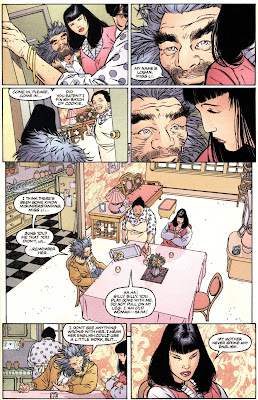















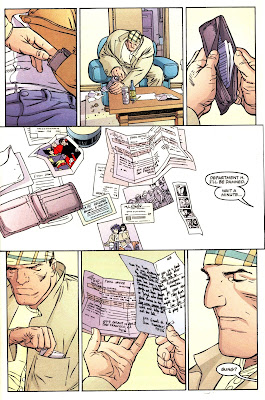





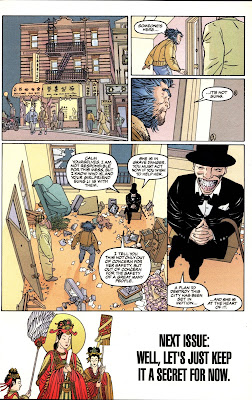









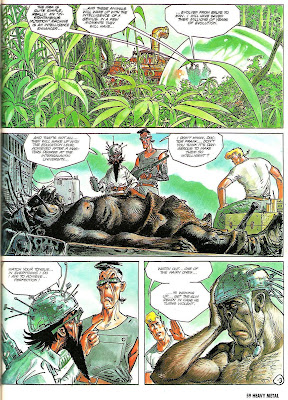




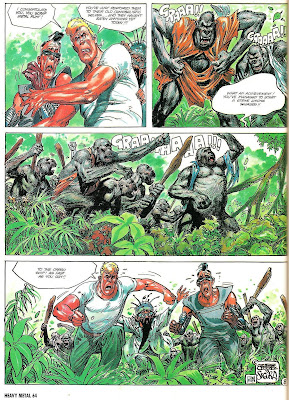





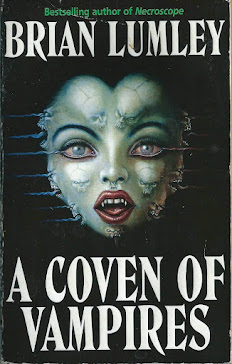






.jpg)
















